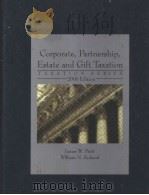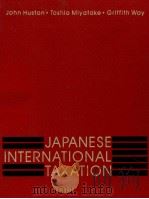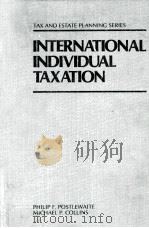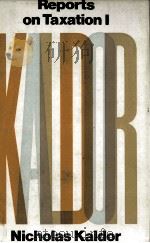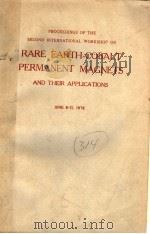《PERMANENT ESATBLISHMENT SERIES ON INTERNATIONAL TAXATION》
| 作者 | ARVID A.SKAAR 编者 |
|---|---|
| 出版 | KLUWER LAW AND TAXATION PUBLISHERS |
| 参考页数 | 610 |
| 出版时间 | 1991(求助前请核对) 目录预览 |
| ISBN号 | 9065445943 — 求助条款 |
| PDF编号 | 813698668(仅供预览,未存储实际文件) |
| 求助格式 | 扫描PDF(若分多册发行,每次仅能受理1册) |
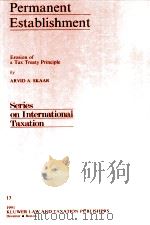
PART ONE: INTRODUCTION1
1 Preliminary issues1
1.1 Permanent Establishment: A commercially separate but legally integrated entity1
1.2 The problems treated by this study2
1.3 The comparative technique and the study of PE5
1.4 Reasons for using a PE rather than a subsidiary: An overview8
1.5 The effect of the presence of a PE: An overview9
1.6 The terminology of the present work10
2 Some constitutive political and economic elements of international society13
2.1 Growth of political independence13
2.2 Increased economic interdependence14
2.3 Qualitative (structural) changes in international business15
2.4 Heterogeneity in the world and homogeneity within groups16
2.5 Recognition of the necessity of international law16
2.6 Summary and conclusions17
3 Theories on allocation of international taxing jurisdiction19
3.1 Introduction19
3.2 The "realistic theory" in legal doctrine20
3.3 Economic versus residential and political allegiance22
3.4 The equivalence theory24
3.5 The faculty theory25
3.6 The neutrality theory26
3.7 The PE principle and inter-nations neutrality29
4 Main elements in a tax-treaty policy on PE: Basic contradictions33
4.1 Net capital-importing and exporting countries33
4.2 Countries with competitive business sectors versus countrieswith less competitive business34
4.3 Significant legislative differences35
4.4 Treaties between developed and developing countries36
4.5 Summary37
5 Methodology: Sources of international fiscal law39
5.1 The problem: What are the principles of tax-treaty interpretation?39
5.2 The tax treaty as a source of law40
5.3 The context of the treaty44
5.4 Definitions in domestic laws49
5.5 Custom as a source of tax treaty law55
6 General historical background: An overview65
6.1 The end of the 19th century: The relative immobility of production factors65
6.2 The present situation: Mobile production factors67
6.3 Restructuring of international law and institutions68
6.4 Summary and conclusion69
7 The history of the concept of PE71
7.1 General71
7.2 1845-1909: PE emerges in Prussian law and the law of the German Empire72
7.3 1899-World War I: PE is adopted in international treaties75
7.4 PE and the re-evaluation of the principle of source-state taxation (1920s-World War II)77
7.5 Bilateral treaties in the 1930s: A PE fiction for construction work87
7.6 Revolution and Contrarevolution: The Mexico and London model conventions (the 1940s)88
7.7 Consolidation of the residence-state principle (1950s-1960s)96
7.8 Re-evaluation of the principle of residence-state taxation (mid-1960s - ?)97
7.9 Conclusion101
8 Classification of PE conditions103
8.1 The OECD classification103
8.2 The US classification104
8.3 Recent German classification105
8.4 Swiss doctrine before the Second World War106
8.5 Classification in the present work106
PART TWO: THE BASIC RULE109
A - THE OBJECTIVITY OF THE PE109
9 The taxpayer’s physical presence: The "place of business test"111
9.1 Introduction111
9.2 A list of examples: The "positive list"113
9.3 Branches and places of management115
9.4 Natural resources118
9.5 Machinery or equipment as "place of business"?119
9.6 Securities and bank accounts as a "place of business"?121
9.7 Software and patents as a "place of business"?122
9.8 Human beings and animals as a "place of business"?122
9.9 Summary and conclusion123
10 Physical presence at a specific place: The "location test"125
10.1 General125
10.2 Always sufficient for PE status: Fixed location of the center of the activity126
10.3 The peripatetic place of business: Location of the activity within a spatially delimited area?128
10.4 Summary and conclusions: Is there still one "location test" for onshore and offshore business?147
B - THE SUBJECTIVITY OF THE PE153155
11 The right to use the place of business: The "right of use test"155
11.1 General155
11.2 Historical background156
11.3 The problem: A "factual" or a "legal" approach?157
12 The "right of use test" for profit-sharing arrangements159
12.1 Introduction159
12.2 The partnership as an agency PE?163
12.3 Actual or deemed use of a fixed place of business?167
13 The "right of use test" and arm's-length business connections187
13.1 Introduction187
13.2 Joint-venture-like co-operation with a client187
13.3 Leasing and franchising of business assets and business facilities191
13.4 Use of facilities belonging to other business connections195
13.5 The performance of auxiliary activities196
14 Indirect evidence of a right of use to a place of business201
14.1 Commercial activities in dwellings and home offices201
14.2 Hotel rooms and the "right of use test"204
14.3 Employees' use of employer's facilities205
14.4 Other possible evidence of a right of use to a place of business?206
15 The duration of the right to use the place of business: The "permanence test"209
15.1 General209
15.2 Analogy from the time threshold for construction PE?210
15.3 Criteria for the "permanence test"217
C - THE FUNCTIONALITY OF THE PE227
16 Introduction229
16.1 The four aspects of the "business activity test"229
16.2 Inconsistent terminology230
16.3 Treaties without a general definition of the basic rule230
17 Business activities excluded in the treaties233
17.1 International shipping and air transport233
17.2 Agriculture, forestry, and fishing242
18 The domestic-law aspect: Income-generating activities distinguished from "business" in the treaties245
18.1 The significance of domestic laws245
18.2 Management and maintenance of real estate versus business operations251
18.3 Management of securities260
18.4 Management of licenses: Royalty income267
18.5 Personal services272
18.6 Summary and main conclusions276
19 Core business activity or auxiliary or preparatory activities? The tax-treaty aspect of the concept of "business"279
19.1 Overview279
19.2 Background in older tax treaties281
19.3 The OECD alternative "essential and significant" activities283
19.4 Categories of core business activities299
19.5 Categories of auxiliary business activities307
20 The connection between the business and the place of business: The "business connection test"327
20.1 Introduction327
20.2 The "attraction approach":A place of business serving core business activities within the same jurisdiction328
20.3 A place of business supporting a core business activity outside the jurisdiction of the treaty333
20.4 The "force of attraction principle" of the UN model treaty335
PART THREE: CONSTRUCTION WORK343
21 Introduction: The construction clause and its relationship to the basic rule343
21.1 General343
21.2 Tax treaties with a construction clause344
21.3 Tax treaties without a construction clause347
21.4 Conclusions351
22 The objectivity of the construction PE: Identification353
22.1 The "place of business test" under the construction clause353
22.2 Identification of construction projects: Preliminary issues354
22.3 Conditions for identification359
22.4 The multilateral Nordic treaties: From specific provisions back to the OECD approach379
23 The subjectivity of the construction PE: The "duration test"381
23.1 Overview: 12-month, 6-month or 30-day duration?381
23.2 The start of the "duration test"384
23.3 The termination of the construction project385
23.4 Interruptions during the construction period386
24 The functionality of the construction PE: The "business activity test"391
24.1 Introduction: The problems391
24.2 The main issue: The "constructional" or "functional" aspect of the project?393
24.3 Physical or "intellectual" parts of the construction work: Planning and supervision405
24.4 Construction work for an enterprise’s own purposes414
PART FOUR: OFFSHORE BUSINESS ACTIVITIES419
25 Introduction419
25.1 The main issues419
25.2 A brief historical outline421
26 Outline of offshore PE fictions425
26.1 Introduction425
26.2 The US alternative: PE taxation under the "drilling rig clause"426
27 Offshore identification provisions in the tax treaties between Norway and the US, the UK, France,and the' Nordic states435
27.1 General435
27.2 Overview of some bilateral offshore identification provisions435
27.3 Identification when all assignments are performed offshore437
27.4 Identification of offshore and onshore assignments441
28 The "business activity test" of the offshore clause445
28.1 Overview445
28.2 The geographical criterion: Offshore activities445
28.3 The functional criterion: Exploration and exploitation of natural resources450
28.4 Brief survey of special treaties concerning the North Sea458
28.5 Final observations460
PART FIVE: AGENCIES463
29 Introduction463
29.1 Preliminary remarks463
29.2 Overview of the agency clause464
29.3 The basic rule as an alternative to the agency clause466
29.4 The proceeding discussion470
30 Main trends in the development of the agency clause471
30.1 The agency clause in German domestic laws471
30.2 Tax-treaty law: Early issues (until the end of the 1920s)473
30.3 Criteria for agency PE under the later model treaties of the League of Nations (1929-1946)476
31 The agent and the authorization: The objectivity of the agency PE481
31.1 Introduction481
31.2 The agent481
31.3 Commission or operations under one's own name ?487
31.4 The signing of the contracts489
31.5 Authorization as qualification for an agency PE490
32 "Legal" or "commercial" dependence: The subjectivity of the agency PE503
32.1 Introduction503
32.2 Merging of business interests: Criteria for dependency under the agency clause508
33 Deemed dependency: The "ordinary course of business test"515
33.1 Introduction515
33.2 Typical of the enterprise: Or typical of the industry?516
33.3 Recourse to the "dependence test"519
33.4 Summary521
34 The functionality of the agency PE523
34.1 The business concept under the agency clause523
34.2 The "habitual exercise test"525
35 UN model treaty deviations from the OECD agency clause529
35.1 Overview529
35.2 The "stock of goods test" for agency PE529
35.3 The "single principal test"531
35.4 The UN provisions concerning insurance agents532
PART SIX: SUBSIDIARY AS PE539
36 PE through related corporations539
36.1 Introduction539
36.2 Treaty-based protection of controlled companies540
36.3 Conditions for subsidiary PE542
36.4 Summary and conclusions: Pressure on the PE concept as an alternative to unitary taxation?553
PART SEVEN: SUMMARY AND CONCLUSIONS557
37 Summary and conclusions557
37.1 De lege ferenda: Background and policy issues557
37.2 De lege lata: Summary of conditions for PE560
37.3 Conclusion: Erosion of the PE principle571
37.4 Abandon the "fixed place of business test"574
Bibliography577
Table of cases589
Official documents603
Index607
PART ONE: INTRODUCTION1
1 Preliminary issues1
1.1 Permanent Establishment: A commercially separate but legally integrated entity1
1.2 The problems treated by this study2
1.2.1 Overview2
1.2.2 Hypothesis: No harmonization through the OECD PE definition3
1.2.3 PE issues not discussed4
1.3 The comparative technique and the study of PE5
1.3.1 The comparative technique in tax-treaty history5
1.3.2 Different approaches to "comparative law"6
1.3.3 The selection of countries7
1.4 Reasons for using a PE rather than a subsidiary: An overview8
1.4.1 Lack of experience in a foreign market8
1.4.2 The mobile petroleum-related industries8
1.4.3 The permanent petroleum-related industry9
1.5 The effect of the presence of a PE: An overview9
1.5.1 The primary effect: Allocation of taxing jurisdiction9
1.5.2 Secondary effects of a PE9
1.6 The terminology of the present work10
1.6.1 The "source state","residence state" and "PE state"10
1.6.2 The PE dictionary10
2 Some constitutive political and economic elements of international society13
2.1 Growth of political independence13
2.2 Increased economic interdependence14
2.3 Qualitative (structural) changes in international business15
2.4 Heterogeneity in the world and homogeneity within groups16
2.5 Recognition of the necessity of international law16
2.6 Summary and conclusions17
3 Theories on allocation of international taxing jurisdiction19
3.1 Introduction19
3.2 The "realistic theory" in legal doctrine20
3.3 Economic versus residential and political allegiance22
3.4 The equivalence theory24
3.5 The faculty theory25
3.6 The neutrality theory26
3.7 The PE principle and inter-nations neutrality29
3.7.1 The basic rule of PE30
3.7.2 The construction clause30
3.7.3 The agency clause31
3.7.4 Conclusion31
4 Main elements in a tax-treaty policy on PE: Basic contradictions33
4.1 Net capital-importing and exporting countries33
4.2 Countries with competitive business sectors versus countries with less competitive business34
4.3 Significant legislative differences35
4.4 Treaties between developed and developing countries36
4.5 Summary37
5 Methodology: Sources of international fiscal law39
5.1 The problem: What are the principles of tax-treaty interpretation?39
5.2 The tax treaty as a source of law40
5.2.1 The primacy of the "ordinary meaning" of the text of the treaty40
5.2.2 The "object and purpose" of the treaty41
5.3 The context of the treaty44
5.3.1 Protocols, observations and reservations44
5.3.2 Mutual agreements44
5.3.3 The commentaries to the OECD model treaties45
a) Overview of the "context approach" versus the "preparatory work approach" and the "treaty approach"45
b) Pro et contra the "context,""preparatory work" and "treaty" approach46
c) Conclusion: A moral or judicial obligation?48
5.3.4 The commentaries to the UN 1980 model convention48
5.4 Definitions in domestic laws49
5.4.1 Overview49
5.4.2 Different meanings in internal laws49
5.4.3 Which state's internal laws?50
a) The law of the residence state50
b) The lex loci option51
c) The lex fori option: Conclusions51
5.4.4 Static or ambulatory (dynamic) interpretation?52
5.5 Custom as a source of tax treaty law55
5.5.1 Domestic court decisions55
5.5.2 Administrative decisions56
5.5.3 Judicial practice concerning domestic laws58
5.5.4 Parallel and deviating treaties60
a) Treaty provisions60
b) Judicial practice concerning parallel treaties61
5.5.5 Supplementary means of interpretation62
a) Preparatory work and the circumstances of the conclusion of the treaty62
b) Theory as a source of law63
6 General historical background: An overview65
6.1 The end of the 19th century: The relative immobility of production factors65
6.2 The present situation: Mobile production factors67
6.3 Restructuring of international law and institutions68
6.4 Summary and conclusion69
7 The history of the concept of PE71
7.1 General71
7.2 1845-1909: PE emerges in Prussian law and the law of the German Empire72
7.3 1899-World War I: PE is adopted in international treaties75
7.4 PE and the re-evaluation of the principle of source-state taxation (1920s-World War II)77
7.4.1 PE in the early post World War I treaties77
7.4.2 The change from source-state to residencestate taxation78
a) The League of Nations’ Group of Economists79
b) The International Chamber of Commerce80
c) The League of Nations’ Group of Technical Experts81
d) Narrowing down of the scope of PE taxation: Dependent and independent agents82
7.4.3 The League of Nations 1927 draft convention82
a) The PE definition of the Committee of Technical Experts82
b) "Affiliated companies" as PE83
c) Little influence of the 1927 draft upon the text of bilateral treaties83
7.4.4 The League of Nations draft conventions 1928-193384
a) Disagreements required new drafts84
b) The PE definition of the 1928 draft conventions: Omission of "affiliated companies" as PE85
c) The League of Nations 1931 multilateral draft conventions85
d) The 1933 draft convention: Adjustments in the PE definition86
7.4.5 The mid and late 1930s: Other issues in focus87
7.5 Bilateral treaties in the 1930s: A PE fiction for construction work87
7.6 Revolution and Contrarevolution: The Mexico and London model conventions (the 1940s)88
7.6.1 The outbreak of the war: The Subcommittee of the League of Nations' Fiscal Committee88
7.6.2 The Mexico 1943 model: The first model treaty for developing countries88
7.6.3 The reaction in London 1946: Reintroduction of the PE principle89
7.6.4 The difference between the business clause of Mexico 1943 and London 194689
a) The Mexico 1943 model89
b) The London 1946 model90
c) The League of Nations arguments pro et contra90
7.6.5 The PE definition of the Mexico and London models91
a) The basic rule of Mexico 1943 and London 194692
b) The agency clause of Mexico 1943 and London 194693
c) For the first time in a model treaty: Construction work may constitute a PE94
d) Another innovation: The "subsidiary clause"94
e) The influence of the Mexico/London models95
7.7 Consolidation of the residence-state principle (1950s-1960s)96
7.7.1 Main impression: Continuity between the League of Nations and the OECD96
7.7.2 PE innovations in the OECD model conventions96
7.8 Re-evaluation of the principle of residence-state taxation (mid-1960s - ?)97
7.8.1 An early signal in 195597
7.8.2 Tax-treaty initiatives by the United Nations from the mid 1960s98
7.8.3 Tax-treaty initiatives in Latin America99
7.8.4 Renewed interest in source-state taxation among OECD members100
7.9 Conclusion101
8 Classification of PE conditions103
8.1 The OECD classification103
8.2 The US classification104
8.3 Recent German classification105
8.4 Swiss doctrine before the Second World War106
8.5 Classification in the present work106
PART TWO: THE BASIC RULE109
A - THE OBJECTIVITY OF THE PE109
9 The taxpayer's physical presence: The "place of business test"111
9.1 Introduction111
9.1.1 The fixed place of business: The "objective presence" in another country111
9.1.2 The place of business: Not subject to business activities112
9.2 A list of examples: The "positive list"113
9.2.1 Prima facie PE113
9.2.2 The primacy of the basic rule114
9.2.3 No interpretation ejusdem generis114
9.2.4 The "place of business" in German doctrine concerning domestic laws and tax-treaty law115
9.3 Branches and places of management115
9.3.1 The branch116
9.3.2 The place of management116
9.4 Natural resources118
9.5 Machinery or equipment as "place of business"?119
9.6 Securities and bank accounts as a "place of business"?121
9.7 Software and patents as a "place of business"?122
9.8 Human beings and animals as a "place of business"?122
9.9 Summary and conclusion123
10 Physical presence at a specific place: The "location test"125
10.1 General125
10.2 Always sufficient for PE status: Fixed location of the center of the activity126
10.3 The peripatetic place of business: Location of the activity within a spatially delimited area?128
10.3.1 The starting point128
10.3.2 Illustrative for the tax-treaty issue: The "spatial-delimitation approach" versus the "base approach" in German domestic laws128
10.3.3 The spatial-delimitation approach for onshore business activities130
a) Norwegian/Danish practice and doctrine130
b) Artistes and theatrical shows: US and New Zealand practice131
aa) The problem131
bb) Performances at one place132
cc) Musical tours etc132
dd) A New Zealand court decision132
c) US:The sole proprietor and the agency clause133
10.3.4 The "location test" and the transportation133
a) International traffic133
b) Domestic transportation134
c) Business activities onboard ships and aircraft136
10.3.5 The spatial delimitation approach for stationary, floating business activities137
a) The problem137
b) The precedence in Norwegian administrative practice138
10.3.6 The "spatial delimitation approach" for ambulatory places of business139
a) The problem139
b) Assignments for several unrelated clients140
aa) Operation of a drilling rig: A UK perspective140
bb) Operation of a drilling rig: A US perspective141
cc) Assignments on drilling rigs142
dd) Summary143
c) Ambulatory activities for the same client143
aa) The Canadian/Norwegian perspective143
bb) The US perspective in US Drilling Rig145
cc) The Danish perspective145
dd) Casuistry: Ambulatory assignments on off shore installation145
10.4 Summary and conclusions: Is there still one "location test" for onshore and offshore business?147
10.4.1 From OECD 1963 to OECD 1977148
10.4.2 Comparison between Creole and Concert Tour148
10.4.3 Market Vendor, the Timber Cases and the drilling cases149
10.4.4 Circus, carnival, etc., compared to drilling activities150
10.4.5 Fishing boats compared to drilling activities150
10.4.6 Main conclusions151
B - THE SUBJECTIVITY OF THE PE153155
11 The right to use the place of business: The "right of use test"155
11.1 General155
11.2 Historical background156
11.3 The problem: A "factual" or a "legal" approach?157
12 The "right of use test" for profit-sharing arrangements159
12.1 Introduction159
12.1.1 The main issue159
12.1.2 Partner or partnership as "enterprise" in the tax treaties?160
a)"Aggregate" versus "entity"approach160
b) No answer in the OECD model160
c) Casuistry161
aa) The UK Court of Appeal's decision in Padmore161
bb) The Canadian Tax Appeal Board in Subway162
cc) The US Tax Court's decision in Unger162
d) Conclusion162
12.2 The partnership as an agency PE?163
12.2.1 Policy163
12.2.2 Agency versus partnership164
a) Acting on behalf of somebody else164
b) Dependence164
c) Profit-sharing165
d) Casuistry and literature165
e) Conclusion166
12.2.3 Management agreements166
12.3 Actual or deemed use of a fixed place of business?167
12.3.1 Policy viewpoints167
12.3.2 General partnerships168
a) Active participation?168
b) A leading case: The US Tax Court's decision in Johnston168
c) A Dutch judicial decision169
d) Positions in the doctrine169
12.3.3 Limited partnerships170
a) General170
b) US judicial practice: Donroy and Unger171
aa) Donroy by the US Tax Court171
bb) Unger171
c) Practice from other countries: Confirmation of the conclusion in Donroy and Unger172
aa) Danish and Norwegian administrative practice172
bb) Dutch judicial practice172
12.3.4 The silent-partner kind of business co-operation173
a)A share of the gross income173
aa) Essence d'Oriente173
bb) A French judicial decision174
cc) Conclusion175
b) Profit-based pensions and retirement reimbursements175
c) Conclusions175
12.3.5 Joint ventures176
a) General176
b) Reasons for using a joint venture176
c) Collective use of one place of business177
aa) A Norwegian administrative case: Engineering177
bb) A Canadian Tax Appeal Board decision: Subway178
d) Is factual use of the place of business required?179
aa) A Greek judicial decision179
bb) A Dutch lower court decision180
cc) PE through "sub-joint ventures"?181
dd) International litigation181
e) Conclusion182
12.3.6 Members of insurance syndicates ("names" and underwriters)182
12.3.7 Trusts and the constitution of PE183
12.3.8 Patronage distributions from co-operatives184
13 The "right of use test" and arm's-length business connections187
13.1 Introduction187
13.2 Joint-venture-like co-operation with a client187
13.2.1 German domestic laws187
a) The traditional view187
b) An alternative approach: Football Trainer188
13.2.2 Tax-treaty law188
a) Long-term use of the client's premises188
b) Occasional use under contractual obligations189
aa) The German Supreme Court: Consultancy1990189
bb) The Norwegian lower court: Pegrum190
cc) Conclusion191
13.3 Leasing and franchising of business assets and business facilities191
13.3.1 Leasing of business assets191
13.3.2 Leasing of business enterprises192
a) German decisions concerning domestic laws192
b) The Danish decision in Mink Farm - taxtreaty law192
13.3.3 The "right of use test" under franchising agreements193
13.3.4 Bareboat versus time charter194
13.3.5 Gaming and vending machines194
13.4 Use of facilities belonging to other business connections195
13.4.1 Facilities belonging to advisers195
13.4.2 The use of the facilities of customers195
13.5 The performance of auxiliary activities196
13.5.1 German domestic laws and auxiliary activities196
a) Control activities create a PE?196
b) Reconsidering the rationale of Leasing: Insurance 1962197
13.5.2 Tax-treaty law197
a) Control of contractual obligations197
b) The use of facilities for auxiliary business activities198
14 Indirect evidence of a right of use to a place of business201
14.1 Commercial activities in dwellings and home offices201
14.1.1 German domestic laws201
14.1.2 Tax-treaty law202
a) Business activities in dwellings202
b) Home offices203
c) Agents and dwellings under the basic rule203
d) Conclusion204
14.2 Hotel rooms and the "right of use test"204
14.3 Employees'use of employer’s facilities205
14.4 Other possible evidence of a right of use to a place of business?206
14.4.1 Stationery, letterheads, firm signs, bank accounts,etc206
14.4.2 Ownership and sales of merchandise207
15 The duration of the right to use the place of business: The"permanence test"209
15.1 General209
15.1.1 The "permanence test" and other PE conditions209
15.1.2 Permanent versus temporary use of the place of business210
15.2 Analogy from the time threshold for construction PE?210
15.2.1 The question of analogy de lege ferenda211
15.2.2 Analogy in German domestic laws212
15.2.3 The question of analogy de lege lata214
a) The analogy for "construction-like" business activities214
b) The analogy for "non-construction-like" activities215
15.2.4 Conclusion216
15.3 Criteria for the "permanence test"217
15.3.1 Intended permanence as a basis for "permanence"217
15.3.2 The place of business and the business activity as the basis for "permanence"217
15.3.3 The duration of the business activity as the basis for "permanence"218
a) The "look-forward rule"218
b) The "look-back recharacterization rule"218
15.3.4 Sufficient duration of a "permanent" place of business219
a) An "18-month" or a "two-year rule"?219
b) What amount of time is never sufficient?220
15.3.5 Calculation of the duration of the business activity222
a) The start of the "duration test"222
b) The end of the "duration test"223
15.3.6 The significance of reiteration and interruption224
a) Reiteration as a basis for "permanence"224
b) Interrupted work periods225
15.3.7 Conclusions225
C- THE FUNCTIONALITY OF THE PE227
16 Introduction229
16.1 The four aspects of the "business activity test"229
16.2 Inconsistent terminology230
16.3 Treaties without a general definition of the basic rule230
17 Business activities excluded in the treaties233
17.1 International shipping and air transport233
17.1.1 Introduction233
a) International shipping and air traffic under the OECD model treaty233
b) Deviating tax-treaty practice233
c) The UN model treaty234
d) Inland waterways traffic234
17.1.2 Place of effective management234
17.1.3 Issues under the "business activity test" of art. 8236
a) Operation of vessels in international waters236
aa) Time charter versus bareboat charter236
bb) Drilling activities237
cc) Supply activities239
dd) Oceanographic surveys239
ee) Fishing, dredging and hauling239
b) International traffic as distinguished from inland waterways traffic240
c) International transportation and connected business activities240
aa) Tickets, ground transportation, airport hotels,etc240
bb) Public relation activities241
cc) Containers241
d) Dividends, interest and other passive investment income242
17.2 Agriculture, forestry, and fishing242
18 The domestic-law aspect: Income-generating activities distin-guished from "business" in the treaties245
18.1 The significance of domestic laws245
18.1.1 The US concept of "trade or business"246
18.1.2 German domestic laws: Gewerbebetrieb248
18.1.3 Norwegian domestic laws: Virksomhet249
18.1.4 The main issues in the proceeding discussion250
18.2 Management and maintenance of real estate versus business operations251
18.2.1 General251
a) Rental income in Belgian judicial practice252
b) Canadian judicial practice concerning rental income252
c) Parceling of real estate in lots: A Danish perspective253
18.2.2 The "business activity test" in US judicial decisions concerning management of real estate253
a) An early non-treaty decision: Pinchot254
b) Confirming a PE: The Tax Court's decision in Lewenhaupt254
c) Denying a PE: The decisions in Amodio and Herbert255
aa) Confirming a "trade or business": Amodio255
bb) Denying a "trade or business": Herbert256
d) Conclusion: A wide tax-treaty concept of "busi-ness"257
18.2.3 German law: The "business activity test" and rental income from real property257
a) The "business" concept of the general Income Tax Act257
b) The "business activity test" in the domestic PE definition258
18.2.4 Norwegian domestic laws: Rental income as business profits?259
18.3 Management of securities260
18.3.1 Introduction260
18.3.2 Investment in securities and the US "trade or business" concept261
a)"Business activity" for investment corporations?262
b) Personal investment activities262
aa) Investment income as "trade or business"262
bb) The "trade or business" concept regarding expenses263
c) Investment activities by trusts as "trade or business"?264
d) Conclusion264
18.3.3 German law and trading in securities265
18.3.4 Norwegian law265
18.4 Management of licenses: Royalty income267
18.4.1 Royalties and the concept of "trade or business" in US domestic laws268
18.4.2 German domestic laws and the term "royalty"270
18.4.3 Norwegian domestic laws and the term "royalty"270
a) Deutsche Werft270
b) Essence d'Oriente271
c) Aga-Baltic271
d) Conclusion272
18.5 Personal services272
18.5.1 Independent personal services: "Liberal professions"273
a) The "fixed base" of an independent professional273
b) The "183-day test"273
c) Business activity versus "liberal profession"274
d) Conclusion275
18.5.2 Dependent personal services275
18.6 Summary and main conclusions276
19 Core business activity or auxiliary or preparatory activities? The tax-treaty aspect of the concept of "business"279
19.1 Overview279
19.1.1 The catch-all term of the OECD-based "negative list"279
19.1.2 Auxiliary and preparatory activities280
19.1.3 A non-OECD-based case: Iron Ore281
19.2 Background in older tax treaties281
19.2.1 The "productive clause"281
19.2.2 The "profitable criterion"283
19.3 The OECD alternative "essential and significant" activities283
19.3.1 The starting point: The general purpose of the enterprise?284
a) An example: Invoicing and collecting leasing charges284
b) Patents, know-how and copyrights285
c) Banking285
aa) Swiss judicial practice286
bb) US administrative practice286
cc) Norwegian administrative practice287
d) Conclusion287
19.3.2 The relative importance of the activity: The quantitative aspect288
a) General288
b) OECD-based treaties288
c) A special case: LKAB289
d) Conclusion290
19.3.3 Combination of activities: The "cumulation clause"290
a) A pre-OECD position290
aa) De lege lata: The OECD alternative290
bb) Other alternatives de lege ferenda291
b) Combination of auxiliary with core business activities292
aa) OECD-based treaties292
bb) Pre-OECD treaties292
cc) Purchasing activities: "Strong" and "weak"excepted activities293
dd) Conclusion293
c) Combination of auxiliary with other auxiliary activities294
aa) German domestic laws in Export Agent294
bb) Tax-treaty law294
cc) Conclusion295
d) Combination of auxiliary activities and independent agents296
e) The "cumulation clause" in treaties with developing countries297
aa) The UN model convention297
bb) Norwegian tax-treaty practice: Reintroduc-tion of the "force of attraction principle"?297
19.4 Categories of core business activities299
19.4.1 General: Exploitation, manufacturing and sales activities299
a) Pre-sales activities299
b) Post-sales activities300
19.4.2 Management301
a) General: The "place of management"301
b) Regional places of management301
c) Fractions of management302
aa) Supervision and coordination302
bb) Accounting and budgeting302
cc) Other supervisory activities303
dd) Management services versus consultancy services and technical services304
ee) Payment routines, nomination of board member, etc305
ff) Letterbox and simple paperwork305
gg) Shore bases for offshore drilling activities305
19.4.3 Transportation306
19.4.4 Leasing306
19.5 Categories of auxiliary business activities307
19.5.1 Research and development307
a) General307
b) Research as distinguished from quality control307
c) Research and development for other enterprises308
d) Research and development as joint venture308
19.5.2 Advertising and public relation309
19.5.3 Collecting information310
a) Agencies for newspapers and broadcasting corporations311
aa) News bureaux versus editorial offices311
bb) Broadcasting stations312
b) Market information312
c) Credit reports313
19.5.4 Purchase of stocks of goods and merchandise313
a) General313
b) Purchasing activities in domestic laws314
c) Activities related to purchasing activities314
d) Purchasing solely for the enterprise's own purposes abroad?315
e) Purchasing for related companies315
f) Purchasing activities and the "arm's length prin-ciple"316
19.5.5 Storage, display, processing and delivery of stocks of goods and merchandise317
a) General storage and display317
aa) Storing for third parties?317
bb) Bonded warehouse318
cc) Consignment stocks318
dd) Exception for the use of facilities or for the activity of storing,displaying, or delivering?319
b) Storage for processing abroad319
c) Storage for delivery of stocks of goods and merchandise320
aa) The "delivery exception" in the OECD model treaty320
bb) Omission of the "delivery exception": Recourse to the basic rule321
cc) Omission of the "delivery clause" in the UN model treaty322
19.5.6 Other auxiliary business activities322
a) Invoicing and collection of claims323
b) Handling of customs,etc323
c) "After-business activities"323
d) Recreational activities324
19.5.7 Conclusions: No general principle?324
20 The connection between the business and the place of business: The "business connection test"327
20.1 Introduction327
20.1.1 Business performed "through" a fixed place of business327
20.1.2 Whose "business" activity is conducted through the place of business?328
20.2 The "attraction approach": A place of business serving core business activities within the same jurisdiction328
20.2.1 Agents without pricing authority329
20.2.2 The Dutch Supreme Court’s decision in Street Market330
20.2.3 Truck driver’s parking lot Timber 1982330
20.2.4 Storage of equipment: Alaska and Creole331
a) Alaska331
b) Creole331
20.2.5 Onshore bases for offshore activities332
20.2.6 Conclusion333
20.3 A place of business supporting a core business activity outside the jurisdiction of the treaty333
20.3.1 Hiring-out of labor333
20.3.2 PE taxation of transportation through pipelines under the basic rule334
20.4 The "force of attraction principle" of the UN model treaty335
20.4.1 Options for extension of source-state taxation of business profits335
20.4.2 The "force of attraction principle" in the UN model treaty336
a) The text336
b) The policy behind the "force of attraction principle"336
c) The relationship between "sales" (litra b) and "other business activities" (litra c)337
20.4.3 The "force of attraction provision" as an identification clause338
a) "Force of attraction" and the independent agent338
b)"Force of attraction" and construction338
aa) Construction activities and "similar" activities339
bb) Simultaneous and subsequent construction339
20.4.4 Circumvention of the UN "force of attraction principle"339
PART THREE: CONSTRUCTION WORK343
21 Introduction: The construction clause and its relationship to the basic rule343
21.1 General343
21.2 Tax treaties with a construction clause344
21.2.1 Construction tasks are impermanent344
21.2.2 A specific "location test" for the construction clause?345
21.2.3 One project makes one PE: Objective identification345
21.2.4 General contractor and subcontractor: Subjective identification346
21.3 Tax treaties without a construction clause347
21.3.1 Historical background - from the "nature" to the "duration" of the activity347
21.3.2 Application of the basic-rule "permanence test"349
a) Treaties between developed countries349
b) Treaties between developed and developing countries: The case of DTA Norway-UK 1951349
aa) A constitutional argument in the case of Norway350
bb) The time limit for construction tasks under the basic rule350
c) Construction PE under DTA USA-Canada 1942?351
21.4 Conclusions351
22 The objectivity of the construction PE: Identification353
22.1 The "place of business test" under the construction clause353
22.2 Identification of construction projects: Preliminary issues354
22.2.1 The problem: One or several business operations?354
22.2.2 Policy issues with regard to identification355
a) Efficiency of PE taxation: Protection of the tax base355
b) Predictability356
c) Administrative convenience357
22.2.3 Identification also of simultaneous projects?357
22.2.4 Identification among related companies?358
22.3 Conditions for identification359
22.3.1 Overview: Projects constituting a coherent whole359
a) OECD-based tax-treaty law359
b) The Belgian/German/Dutch identification agreement: Unity of execution360
c) Identification in German domestic laws361
22.3.2 Commercial unity as a condition for identification363
a) Introduction363
aa) The same contract363
bb) Interruptions between contracts364
cc) Contracts signed at the same time364
dd) The significance of the same invoice364
b) Identical clients as a condition for identification364
aa) Policy issues364
bb) Is an identical client presupposed in the OECD-based treaties?365
cc) Casuistry: Some judicial and administrative decisions365
dd) Discussion and conclusion367
c) The "constructional entity" as condition for identification367
aa) Policy368
bb) The mutual agreement in Petrochemical Plant368
cc) Simultaneous construction tasks368
dd) Conclusion369
d) The time factor: The "continuous presence test"369
aa) The "continuous presence test" and the construction clause369
bb) The "continuous presence test" and the basic rule371
e) Identical technical aspects as a condition for identification372
22.3.3 Geographical connection373
a) OECD-based treaties373
b) The US perspective: Geographical "interdependence"376
22.3.4 Conclusions: No accumulation of commercial and geographical conditions378
22.4 The multilateral Nordic treaties: From specific provisions back to the OECD approach379
23 The subjectivity of the construction PE: The "duration test"381
23.1 Overview: 12-month, 6-month or 30-day duration?381
23.1.1 The OECD "12-month test"381
23.1.2 The UN "6-month test"382
23.1.3 The British/Norwegian "30-day test within a 12-month period"383
23.1.4 The "6-month test" in German domestic laws383
23.1.5 Reasons for shorter "duration tests"383
23.2 The start of the "duration test"384
23.3 The termination of the construction project385
23.4 Interruptions during the construction period386
23.4.1 Possible solutions de lege ferenda386
a) Final termination: Triggering of a new time limit386
b) Suspension of the time limit387
c) Inclusion of interruptions in working time387
23.4.2 German domestic laws387
23.4.3 The impact of interruptions de lege lata388
a) The starting point388
b) Expected (normal) interruptions389
c) Unexpected (extraordinary) interruptions389
d) Intentional interruptions389
e) Commercial versus non-commercial interruptions389
f) Summary390
24 The functionality of the construction PE: The "business activity test"391
24.1 Introduction: The problems391
24.1.1 The significance of the "business activity test" for construction PE391
24.1.2 Pre-, post-, and simultaneous construction-related activities391
24.1.3 Intellectual activities392
24.1.4 Construction activities under the UN model treaty392
24.2 The main issue: The "constructional" or "functional" aspect of the project?393
24.2.1 The point of departure: Broad or strict interpretation?393
24.2.2 A German perspective: Domestic laws393
24.2.3 Maintenance and repair work394
a) The starting point394
b) No answer in the OECD commentaries394
c) German domestic laws: Casuistry395
d) Tax-treaty law de lege lata: Belgian and Norwegian/Danish repair cases396
e) Conclusion397
24.2.4 Installation work397
a) German domestic laws397
b) Tax-treaty law399
24.2.5 Construction work or business activities preceding construction?400
a) Scaffolding work400
b) The erection of barracks401
c) Demolition, excavation and dredging402
aa) German domestic laws402
bb) Tax-treaty law403
24.2.6 Drilling of oil wells as "construction work"403
24.3 Physical or "intellectual" parts of the construction work: Planning and supervision405
24.3.1 Introduction405
24.3.2 German domestic laws406
24.3.3 Intellectual activities under OECD-based tax treaties407
a) OECD commentaries: Only intellectual activities pertaining to physical work407
b) Planning and supervision of construction work408
aa) Planning and management by the general contractor408
bb) Supervision without responsibility for physical work409
cc) Sub-subcontracting of the physical work410
c) Quality control of construction work410
aa) Technical quality control411
bb) Quality control of a managerial nature411
d) Summary and conclusion412
24.3.4 Intellectual activities in UN-based tax treaties412
24.3.5 Two non-model-based treaties413
a) A US perspective concerning DTA USA-Canada 1942413
b) The DTA Nordic States 1989414
24.4 Construction work for an enterprise's own purposes414
PART FOUR: OFFSHORE BUSINESS ACTIVITIES419
25 Introduction419
25.1 The main issues419
25.1.1 Mobile versus stationary offshore business activities419
25.1.2 OECD discussions: No solution420
25.1.3 Bilateral practice: PE fictions420
25.2 A brief historical outline421
25.2.1 The history of offshore petroleum activities421
25.2.2 Extension of internal taxing jurisdiction during the 1960s and 1970s422
26 Outline of offshore PE fictions425
26.1 Introduction425
26.2 The US alternative: PE taxation under the "drilling rig clause"426
26.2.2 Historical outline of the "drilling rig clause"426
26.2.2 A "duration test" for offshore drilling427
26.3 The British/Norwegian alternative: Source-state taxation428
26.3.1 Historical outline429
26.3.2 The "fixed place of business test" is abandoned430
26.3.3 The "right of use test" and the "business connection test" are abandoned431
26.3.4 The "business activity test" is retained432
26.3.5 The relationship of the offshore clause to the basic rule432
26.3.6 A brief comparison of the offshore clause with the Mexico and Andean treaties433
27 Offshore identification provisions in the tax treaties between Norway and the US, the UK, France, and the Nordic states435
27.1 General435
27.2 Overview of some bilateral offshore identification provisions435
27.3 Identification when all assignments are performed offshore437
27.3.1 Substantially identical activities437
a) Geographical identification under the offshore clause?437
b) Commercial identification?437
c) Summary439
27.3.2 Identification of simultaneous projects too?439
27.3.3 Which enterprise is subject to identification?440
27.4 Identification of offshore and onshore assignments441
27.4.1 Treaties with an offshore clause441
27.4.2 Treaties which do not cover the continental shelf442
28 The "business activity test" of the offshore clause445
28.1 Overview445
28.2 The geographical criterion: Offshore activities445
28.2.1 The inner or outer borders445
28.2.2 The "water’s edge approach": Norwegian Diving446
28.2.3 A linguistic interpretation of the term"offshore"447
28.2.4 "Offshore": Outside the territorial waters, or outside the baselines under international law?448
a) Outside the territorial waters?448
b) Outside the baselines?449
28.2.5 Conclusion449
28.3 The functional criterion: Exploration and exploitation of natural resources450
28.3.1 Petroleum versus other natural resources450
28.3.2 Transportation of supplies: The "supplyship excepti- on"451
a) Vessels engaged in transportation of personnel and goods451
b) The UK "primary designed function test"452
c) The term "other auxiliary vessels" under the 1989 Nordic treaty454
aa) Other transportation vessels?454
bb) Diving vessels454
cc) Oceanographic surveys455
d) The "supply-ship clause" versus the "international transportation clause" in DTA Nor-way-USA 1971456
e) The US "drilling rig clause" and oceanographic surveys456
28.3.3 Transportation under the offshore clause457
a) Passage over the continental shelf457
b) Transportation of petroleum from production platforms457
28.4 Brief survey of special treaties concerning the North Sea458
28.4.1 Transportation of petroleum from the Norwegian continental shelf to the UK and Germany458
a) Abandonment of the PE principle458
b) The Ekofisk treaty between Norway and Germany459
c) The Frigg treaty between Norway and the UK459
28.4.2 Taxing jurisdiction over profits from extraction of petroleum from transmedian line oil and gas fields459
28.5 Final observations460
PART FIVE: AGENCIES463
29 Introduction463
29.1 Preliminary remarks463
29.2 Overview of the agency clause464
29.2.1 The objectivity of the agency PE464
29.2.2 The subjectivity of the agency PE465
29.2.3 The functionality of the agency PE466
29.3 The basic rule as an alternative to the agency clause466
29.3.1 The principal has a fixed place of business467
29.3.2 The agency clause and the basic-rule "permanence test" and "business activity test"468
29.3.3 Conclusion469
29.4 The proceeding discussion470
30 Main trends in the development of the agency clause471
30.1 The agency clause in German domestic laws471
30.1.1 From the 1890s through 1934471
30.1.2 Agency as PE in 1934: § 16 StAnpG472
30.1.3 Separation of PE and agency PE: § 13 AO472
30.2 Tax-treaty law: Early issues (until the end of the 1920s)473
30.2.1 The agency clause and the "fixed place of business test"473
30.2.2 Partners as agents?474
30.2.3 The "independent agent clause"474
a) Historical roots in UK domestic laws474
b) Adoption in the 1927 model treaty of the League of Nations475
30.3 Criteria for agency PE under the later model treaties of the League of Nations (1929-1946)476
30.3.1 Four rejected criteria476
30.3.2 The League of Nations three alternative conditions for agency PE477
a) The 1929 report477
b) The 1930 report477
c) Combined efforts by the International Chamber of Commerce and the League of Nations478
d) The influence upon bilateral treaties479
31 The agent and the authorization: The objectivity of the agency PE481
31.1 Introduction481
31.2 The agent481
31.2.1 Personal representation?482
31.2.2 Several agents: One PE?483
31.2.3 The agent's connection to the territory of the state484
a) The problem484
b) German domestic laws484
c) OECD-based treaties485
d) Issues under the UN model treaty485
e) Activities performed onboard ships486
31.2.4 The sole proprietor as "agent" for himself?486
31.3 Commission or operations under one's own name ?487
31.4 The signing of the contracts489
31.4.1 The persons signing the contracts489
31.4.2 The place where the contract is signed489
31.5 Authorization as qualification for an agency PE490
31.5.1 Introduction490
31.5.2 The legal basis of the agency PE490
31.5.3 The distinction between soliciting, negotiating and concluding contracts491
a) Soliciting and negotiating contracts are insufficient491
b) De lege ferenda: Should negotiations be enough?492
aa) Lack of neutrality492
bb) Administrative convenience492
cc) German domestic laws493
dd) Conclusion493
c) Both negotiate and conclude contracts?494
d) Limitations on authority495
aa) Power to instruct as qualification of the agency495
bb) Fixed conditions: No agency?496
e) General or limited authorization?497
31.5.4"Internal" or "external" authorization?498
a) Problem and terminology498
b) No solution in the OECD commentaries499
c) Practice and doctrine in some countries499
aa) US commentators and practice499
bb) The German position500
cc) Pseudo-authorization: A case by a Dutch lower court501
dd) Norwegian commentators501
d) Conclusion502
32 "Legal" or "commercial" dependence: The subjectivity of the agency PE503
32.1 Introduction503
32.1.1 Overview of the "dependence test"503
32.1.2 Agency PE through employees504
32.1.3 The "broker" and the "general commission agent"505
32.1.4 Inconsistency in the model treaty commentaries?506
32.1.5 The historical roots in early German domestic laws: "Commercial" versus "social" dependence507
32.2 Merging of business interests: Criteria for dependency under the agency clause508
32.2.1 The OECD commentaries as starting point508
32.2.2 The German Supreme Court on domestic laws: "Objective" versus "personal" dependence"508
32.2.3 Tax-treaty law: Power to instruct versus the agent's discretionary power of attorney — casuistry510
a) The German Supreme Court: Insurance 1975510
b) The South African Supreme Court decision: Downing510
c) A Norwegian administrative ruling: Magnesium511
32.2.4 Other evidence of merging of business interests512
a) The principal's support of the agent's activities512
b) The principal's sanctions and control512
c) The number of clients512
d) Sharing of entrepreneurial risks513
32.2.5 Summary and conclusions513
33 Deemed dependency: The "ordinary course of business test"515
33.1 Introduction515
33.2 Typical of the enterprise: Or typical of the industry?516
33.2.1 Casuistry517
a) The German Supreme Court: Insurance 1975517
b) Dutch court practice517
c) The UK High Court decision in Fleming and London Produce Co. Ltd518
d) A Belgian Supreme Court decision518
33.2.2 Conclusion519
33.3 Recourse to the "dependence test"519
33.3.1 The problem519
33.3.2 A German Supreme Court decision: Container519
a) The facts519
b) The contentions of the parties520
c) The lower tax court's decision520
d) The Supreme Court's decision520
33.4 Summary521
34 The functionality of the agency PE523
34.1 The business concept under the agency clause523
34.1.1 The domestic-law aspect523
34.1.2 The tax-treaty aspect523
34.1.3 A different approach: German domestic laws524
34.2 The "habitual exercise test"525
34.2.1 General525
34.2.2 Regularity versus permanence525
34.2.3 Individual judgement: Few general criteria for regularity526
34.2.4 Agency PE for consultancy services and construction work?526
34.2.5 Conclusions527
35 UN model treaty deviations from the OECD agency clause529
35.1 Overview529
35.2 The "stock of goods test" for agency PE529
35.2.1 Historical background529
35.2.2 Only stocks for delivery530
35.3 The "single principal test"531
35.3.1 Overview531
35.3.2 No written agreement?531
35.3.3 Influence upon some Norwegian tax treaties531
35.4 The UN provisions concerning insurance agents532
35.4.1 Overview of policy issues532
a) The effect of the "dependence test"533
b) The effect of missing authority533
c) Discussions in the UN model treaty commentaries533
d) Insurance agents and the "single principal test"534
35.4.2 Overview of the "insurance of risks test" and "col-lection of premiums test"534
35.4.3 The conflict between the "collection of premiums test" and the "insurance of risks test"535
PART SIX: SUBSIDIARY AS PE539
36 PE through related corporations539
36.1 Introduction539
36.2 Treaty-based protection of controlled companies540
36.2.1 General540
36.2.2 Historical background540
36.2.3 Policy considerations541
36.3 Conditions for subsidiary PE542
36.3.1 The objectivity of the subsidiary PE542
a) The basic542
b) The agency clause542
36.3.2 The subjectivity of the subsidiary PE542
a) The basic rule542
b) The agency clause543
36.3.3 The functionality of the subsidiary PE543
a) Alter ego companies: Extensive business co-oper-ation544
b) US domestic laws: The National Carbide and Bollinger criteria545
aa) The National Carbide criteria545
bb) The Bollinger criteria546
cc) Relationship to tax-treaty law547
c) Horizontal and vertical integration547
d) Subsidiary and branch with parallel activities547
36.3.4 Subsidiary PE through "empty" companies?548
a) The problem548
b) Casuistry: "Pass-through agreements" and subcontracting549
aa) Danish Diving549
bb) The Norwegian decision in Hereema (appealed)549
cc) Participation in the same construction project550
dd) Second Belgian/Dutch Identification551
ee) Danish/Norwegian Subsidiary PE552
ff) Letterbox companies as the principal?552
36.4 Summary and conclusions: Pressure on the PE concept as an alternative to unitary taxation?553
PART SEVEN: SUMMARY AND CONCLUSIONS557
37 Summary and conclusions557
37.1 De lege ferenda: Background and policy issues557
37.1.1 Two main structural changes in the international community557
37.1.2 Categories of OECD member countries557
a) Resource states versus know-how states558
b) Competitive versus less competitive national industries558
37.1.3 A change in the effect upon source-state taxation559
37.1.4 Infringement of the equivalence principle559
37.1.5 Lack of neutrality560
37.2 De lege lata:Summary of conditions for PE560
37.2.1 The objective conditions for PE561
a) The "place of business test"561
aa) Substantial physical objects that serve a business activity561
bb) Deviations in recent PE fictions561
cc) Possible developments in the future561
b) The "location test": Continuous presence within a delimited area?562
aa) Towards a "continuous presence test"562
bb) The construction site as a "fixed place ofbusiness"563
c) Abandonment of the "location test": The British/ Norwegian offshore clause563
d) The personal connection564
37.2.2 The subjective condition for PE564
a) The "right of use test"564
b) Profit-sharing arrangements565
c) Arm's-length business operations566
d) The "permanence test": A "duration test" of relative importance566
e)The "dependence test": The agency clause567
f)The "subsidiary PE"567
37.2.3 The functional conditions for PE567
a)The domestic-law aspect: The concept of "busi-ness" differs568
b)The tax-treaty aspect: The "negative list"568
c)The construction clause and the concept of "business"568
d)"Business" under the British/Norwegian offshore clause569
e)The renvoi clause may cause double taxation569
f)The "business connection test"569
g)The "habitual exercise test":The agency clause570
37.2.4 Future trends570
37.3 Conclusion: Erosion of the PE principle571
37.3.1 From "harmonization" to "dis-harmonization" of tax-treaty law?571
37.3.2 Dilution through case law572
37.4 Abandon the "fixed place of business test"?573
Bibliography577
Table of cases589
Official documents603
Index607
1991《PERMANENT ESATBLISHMENT SERIES ON INTERNATIONAL TAXATION》由于是年代较久的资料都绝版了,几乎不可能购买到实物。如果大家为了学习确实需要,可向博主求助其电子版PDF文件(由ARVID A.SKAAR 1991 KLUWER LAW AND TAXATION PUBLISHERS 出版的版本) 。对合法合规的求助,我会当即受理并将下载地址发送给你。
高度相关资料
-
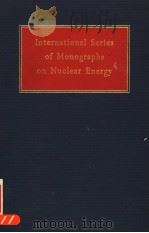
- INTERNATIONAL SERIES OF MONOGRAPHS ON NUCLEAR ENERGY
- PERGAMON PRESS
-

- ISSUES IN INTERNATIONAL PARTNERSHIP TAXATION
- 1991 KLUWER LAW AND TAXATION PUBLISHERS
-
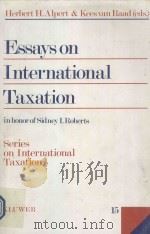
- ESSAYS ON INTERNATIONAL TAXATION
- 1993 KLUWER LAW AND TAXATION PUBLISERS
-
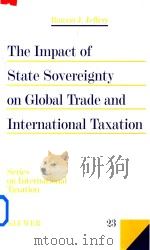
- The Impact of State Sovereignty on Global Trade and International Taxation
- 1999 Kluwer Law International
-
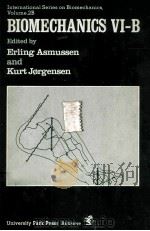
- INTERNATIONAL SERIES ON BIOMECHANICS VOLUME 2B BIOMECHANICS VI-B
- 1978 UNIVERSITY PARK PRESS
-

- THE PERMANENT COURT OF INTERNATIONAL JUSTICE 1920-1942
- 1943 THE MACMILLAN COMPANY
-
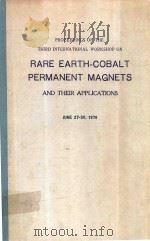
- PROCEEDIGNS OF THE THIRD INTERNATIONAL WORKSHOP ON RARE EARTH-COBALT PERMANENT MAGNETS AND THEIR APP
- 1978
-
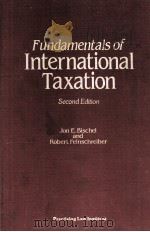
- FUNDAMENTALS OF INTERNATIONAL TAXATION SECOND EDITION
- 1985 PRACTISING LAW INSTITUTE
-
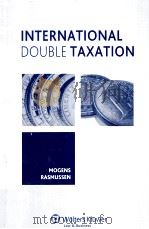
- International Double Taxation
- Kluwer Law International
-

- RICARDO ON TAXATION
- 1992
提示:百度云已更名为百度网盘(百度盘),天翼云盘、微盘下载地址……暂未提供。➥ PDF文字可复制化或转WORD
